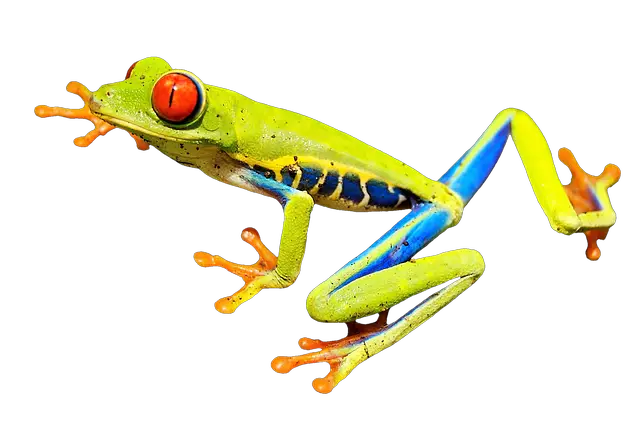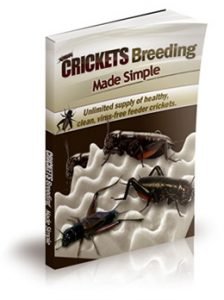Yes, they can!
The red-eyed tree frog is known far and wide for its distinctive, colorful appearance. This curious critter does well in captivity when it lives with more than one frog of its same species.
Keep reading for more information on creating a happy habitat for multiple red-eyed frogs.
Can Red-Eyed Frogs Be Housed Together?
Red-eyed frogs are generally peaceful creatures and can be housed together without any problems.
However, there are a few things to keep in mind if you are planning on housing multiple red-eyed frogs together.
- First, make sure that each frog has its own enclosure. This will give each frog plenty of space to move around and avoid potential conflicts.
- Second, provide hiding places for each frog. This will give them a place to retreat to if they feel stressed or threatened.
- Finally, make sure to monitor the frogs closely and remove any that show signs of aggression.
By following these guidelines, you can successfully house multiple red-eyed frogs together.
Social Behavior of Red-Eyed Frogs
Red-eyed frogs tend to keep to themselves in the wild unless it’s mating season. However, they frequently live near other frogs. In this way, they’re communal creatures, often sharing in the available habitat and resources.
One vivarium can house frogs living alone, in pairs, or a group (known as an army). Each frog needs its own space. If you provide a large enough habitat to accommodate all of your frogs, it’s unlikely they’ll experience stress from competition or exhibit any territorial behavior.
Breeding
Red-eyed tree frogs are more likely to breed when there is competition between males. To avoid the possibility of breeding, either house the frogs in pairs or an army with multiple females and only one male.
However, if you want to try breeding your tree frogs, you must house two males for every female. This will recreate the competition frogs experience in the wild and increase the chances of mating.
How Can Red-Eyed Frogs Be Housed Together?
If you plan on keeping more than one frog in the same vivarium, make sure you scale up every life necessity. This will prevent the frogs from feeling stressed and competing for resources.
It would help if you kept only frogs of the same species together in the same tank. Housing multiple species of amphibians can potentially cause serious problems.
Tank Materials and Dimensions
It’s best to use a vivarium with clear glass. Other tank materials might retain too much heat or be challenging to clean.
See our choice below from Amazon. Just Click The Image.
The tank needs to be tall. Red-eyed frogs live above the forest floor in trees and tall vegetation in the wild. Ensure the tank is 18 inches tall so the frogs can comfortably jump and climb.
Some say one frog can live in a 10-gallon tank, but it cannot be easy to find a 10-gallon tank with a height of 18 inches. A 12- or 15-gallon tank will more frequently meet the minimum height requirement.
Multiple frogs housed in one tank need ample additional space. It’s best to make the tank taller before making it more comprehensive. Here are a few example measurements that follow the minimum dimension guidelines.
Table of Example Minimum Tank Dimensions for Housing Red-Eyed Tree Frogs
| Number of Frogs | Dimension in Inches | Volume Capacity |
| 1 frog | 12” L x 12” W x 18” H | 12 gallons |
| 2 frogs | 20” L x 11” W x 19” H | 15 gallons |
| 3-4 frogs | 24” L x 13” W x 21” H | 20 gallons |
Notice how the height increases as more frogs are added to the tank.
[su_box title=”Our Tree Frog Guide”]If you have or are considering keeping red-eyed tree frogs, We want you to look at our complete guide. It covers absolutely everything about these frogs and is an absolute must. Just click here to have a look.[/su_box]
Feeding Multiple Frogs
Each frog must eat five or six insects every two or three days. If you have four frogs, you need to place 20 to 24 insects in the tank every two or three days. It’s a good idea to watch them eat to ensure all your pets eat and get the nutrients they need.
Frogs eat a variety of insects. Crickets are their staple food, which they can eat at any age or circumstance. Before feeding crickets to your frogs, provide the insects with fruits, vegetables, or cricket food. This gives your frogs a full spectrum of healthy nutrients since they don’t eat fruits and vegetables.
Occasionally supplement your frogs’ staple diet of crickets with other insects like worms, flies, spiders, grasshoppers, and moths. Feed these insects reptile supplements before placing them in the tank’s food dish for your frogs to eat. Place enough of them in the container for all of your frogs.
Basic Habitat Requirements for Red-Eyed Frogs
Along with appropriate tank size and food portions, every red-eyed frog requires some basic environmental necessities:
- Heat source (mat or lamp)
- Water dish (shallow water that shouldn’t submerge a frog’s nostrils while the animal sits in it)
- Substrate
- 60- to 85 percent humidity (mist your frogs daily to peak the humidity levels)
- 68- to 85-degrees temperature, lower at night and higher during the day
- Sticks, branches, and logs
- Substantial amounts of plants and vines.
There should be enough sticks, branches, tall plants, and vines for each frog in the tank to climb in its own space, separate from the other frogs.
A Happy Army
Red-eyed frogs can live comfortably together. All you need to do is make sure you take care of each frog’s individual needs: appropriate spacing, food portions, and essential habitat elements. Follow these guidelines, and your frogs will be a happy army!






